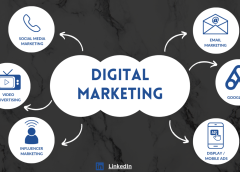In today’s digital era, the term “cloud computing” is becoming increasingly ubiquitous. But what exactly does it mean, and how does it impact our daily lives? Whether you’re a tech enthusiast or just curious about the buzz surrounding cloud technology, this guide aims to demystify the concept and explore its various aspects.
What is Edge Computing?
Let’s start with edge computing, a concept that complements traditional cloud computing. Unlike centralized cloud systems, which process data in remote data centers, edge computing brings computational power closer to the data source. This means that instead of sending data to a distant server for processing, edge devices such as sensors, routers, and IoT devices perform computations locally, at the “edge” of the network. This approach reduces latency and enables real-time data analysis, making it ideal for applications that require rapid response times, such as autonomous vehicles and industrial automation.
Understanding Cloud Usage Monitoring
Cloud usage monitoring involves tracking and analyzing the consumption of cloud resources to optimize performance, manage costs, and ensure compliance with service-level agreements (SLAs). By monitoring metrics such as CPU usage, memory utilization, network traffic, and storage capacity, organizations can gain insights into their cloud usage patterns and identify opportunities for optimization. Cloud usage monitoring tools provide dashboards and reports that enable users to visualize and analyze key performance indicators, helping them make informed decisions about resource allocation and capacity planning.
Exploring Cloud-Enabling Technologies
Cloud-enabling technologies are technologies that facilitate the adoption and integration of cloud computing services. These technologies include virtualization, containerization, automation, and orchestration tools. Virtualization allows multiple virtual machines (VMs) to run on a single physical server, maximizing resource utilization and scalability. Containerization goes a step further by packaging applications and their dependencies into lightweight, portable containers that can be deployed across different cloud environments. Automation and orchestration tools automate repetitive tasks and streamline the management of cloud infrastructure, reducing manual effort and minimizing the risk of human error.
Decoding Cloud Storage Levels
Cloud storage encompasses a range of storage services offered by cloud providers, each with its own characteristics and use cases. The three primary levels of cloud storage are:
- Object Storage: Object storage is designed for storing unstructured data such as photos, videos, and documents. It uses a flat namespace and unique identifiers (e.g., URLs) to organize and retrieve objects, making it highly scalable and resilient.
- Block Storage: Block storage provides raw storage volumes that can be attached to virtual machines to store operating system files, databases, and other structured data. It offers high-performance storage with low latency and is suitable for applications that require fast access to data.
- File Storage: File storage provides shared file systems that multiple users and applications can access simultaneously. It is well-suited for storing structured data and supporting traditional file-based workflows.
Unleashing the Benefits of Cloud Computing
One of the key advantages of cloud computing is its scalability. Unlike traditional on-premises infrastructure, which requires upfront investment in hardware and software, cloud services offer pay-as-you-go pricing models that allow organizations to scale their resources up or down based on demand. This elasticity enables businesses to respond quickly to changing market conditions and seasonal fluctuations without over-provisioning or underutilizing their IT resources.
Moreover, cloud computing promotes collaboration and innovation by providing a flexible and accessible platform for development and deployment. With cloud-based tools and services, teams can collaborate in real-time, share resources, and iterate rapidly, accelerating the pace of innovation. Cloud-native technologies such as serverless computing and microservices architecture further enhance agility and enable organizations to build and deploy applications more efficiently.
In addition to its technical advantages, cloud computing offers significant cost savings compared to traditional IT infrastructure. By outsourcing hardware procurement, maintenance, and management to cloud providers, businesses can reduce capital expenditure and operational costs while benefiting from economies of scale. Furthermore, cloud services eliminate the need for upfront investment in physical infrastructure, allowing organizations to allocate resources more strategically and focus on their core business objectives.
Impact on Industries
The impact of cloud computing extends across various industries, transforming business operations, driving digital transformation, and unlocking new revenue streams. In the healthcare sector, cloud-based electronic health records (EHRs) improve patient care coordination, enhance data security, and facilitate interoperability among healthcare providers. Similarly, in the financial services industry, cloud computing enables banks and financial institutions to innovate faster, improve customer experiences, and comply with regulatory requirements.
In conclusion, cloud computing is revolutionizing the way we store, process, and access data. From edge computing to cloud usage monitoring, and from cloud-enabling technologies to cloud storage levels, there’s a vast ecosystem of tools and services shaping the future of computing. By understanding these concepts and technologies, businesses and individuals can harness the power of the cloud to innovate, collaborate, and thrive in an increasingly digital world.






